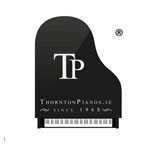Thornton Pianos prides itself on producing pianos for the showroom floor that are reconditioned to the highest standards expected by our customers. The purpose of this blog series is to empower the player to make the best choice possible when purchasing their instrument and to avoid the pitfalls of pianos not offered at the correct standards.
At Thornton Pianos, it is important to us that our customers get the best product possible for their money, regardless of budget. Alongside that belief is that we want to ensure that these beautiful instruments provide joy long into the future. Throughout this article you will see example pictures from a piano we see all too often in our workshop from customers who have purchased instruments at the incorrect standard. Around €2,000 would be the entry point for any reconditioned piano that achieves the correct standards.
Pianos are brilliantly versatile instruments that should last for decades with proper maintenance and upkeep. Like a car, pianos are built using a range of materials and parts. And just like a car, pianos must be serviced regularly to ensure there are no problems, big or small that may affect the piano in the future if they are not addressed.
For Part 1 of this informative blog, we will take a look at a piano below that was sold as “reconditioned” in a retail shop for €1,700. This piano should never have been sold.
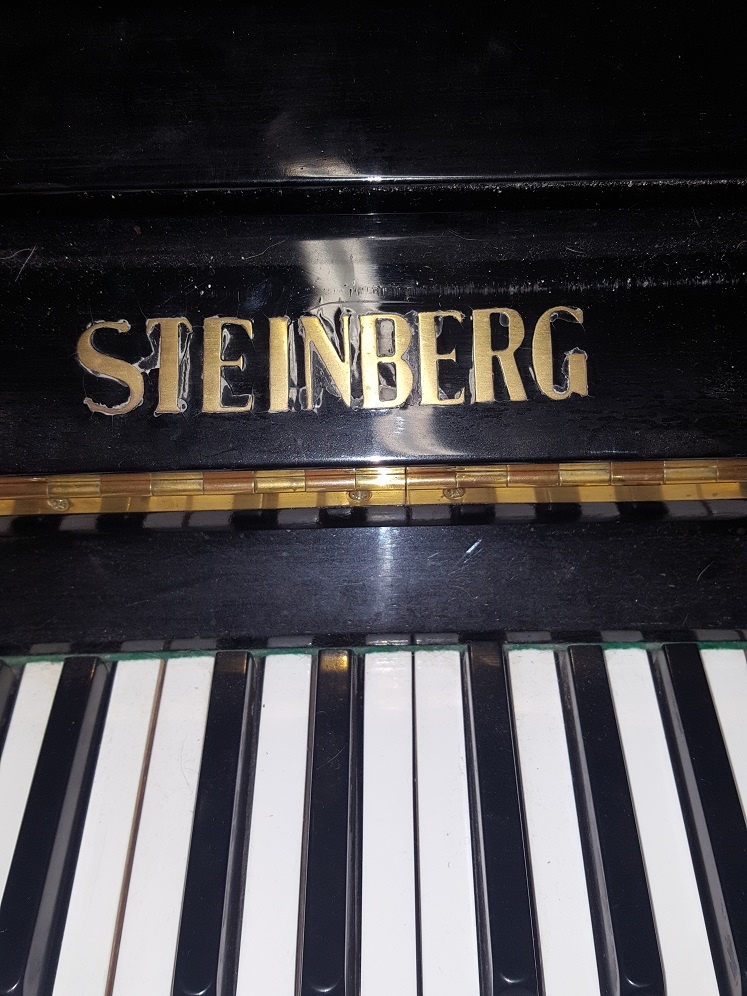
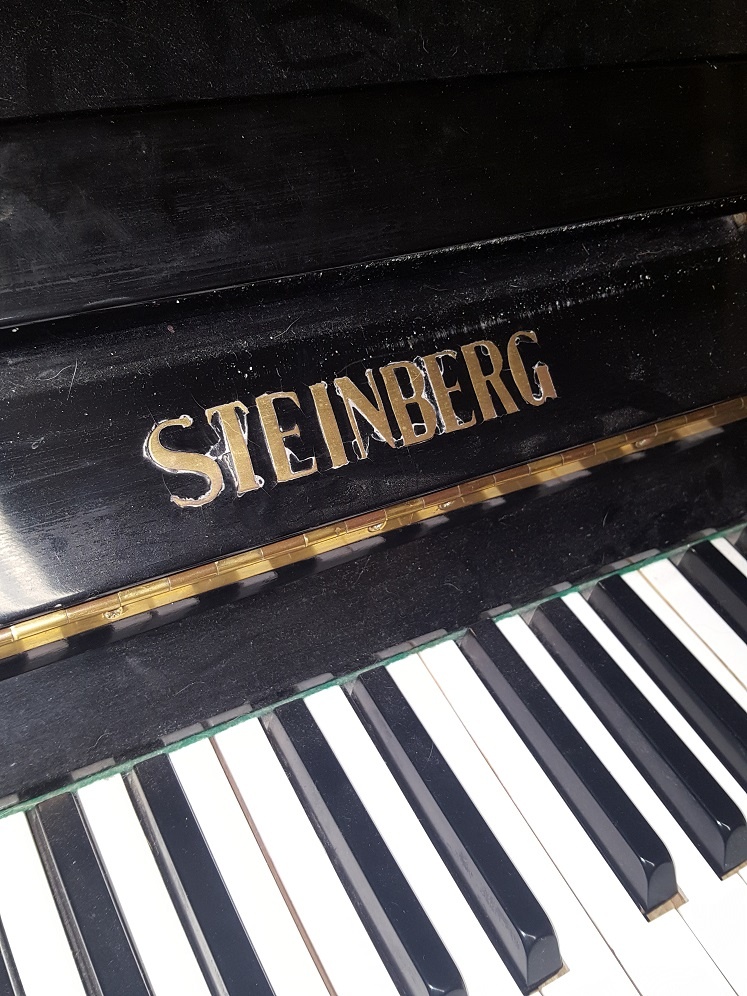
Looking at the name, you can see that if this piano had any cabinet work completed during the reconditioning process, the name was incorrectly applied to the fall. The letters are incorrectly spaced and raised. Small cabinet details like this can give an insight into the overall job completed on the piano.
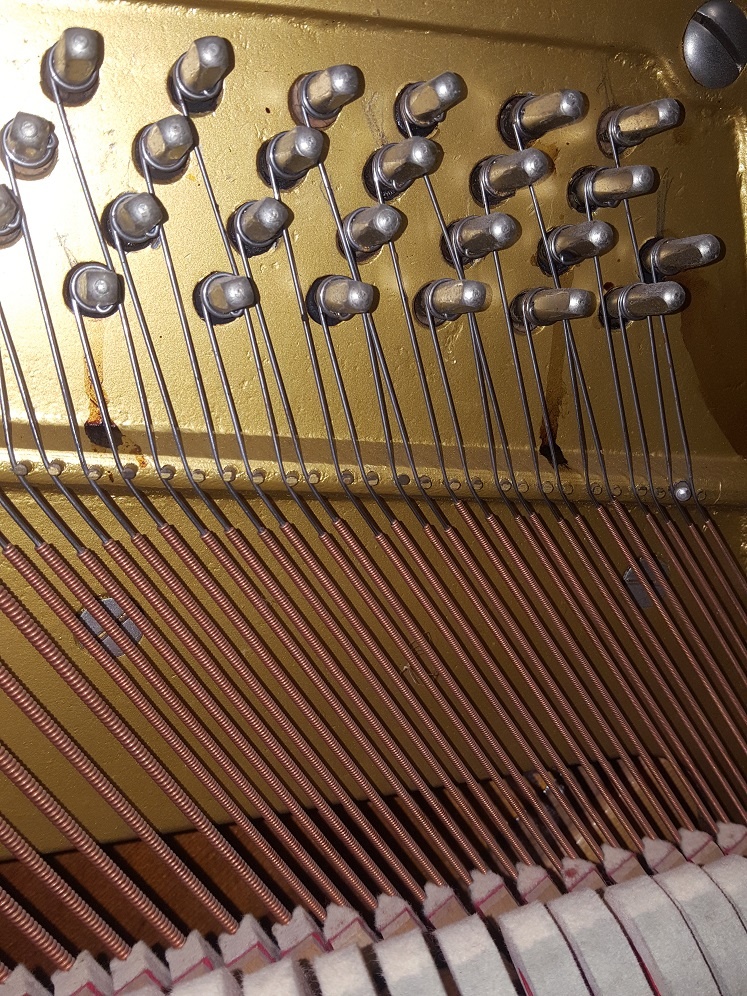
In the image above, we take a look at the tuning pins. The tuning pins which are always set in timber allow the strings to be tightened by your technician. When tuning pins encounter problems they can be treated or replaced if appropriate. Here you can see that an attempt has been made to treat the tuning pins. This should only be a workshop correction. We can see the dark brown staining on the iron frame from where treatments were not applied correctly, leaving staining along with potentially unknown issues behind the iron frame. This part of your piano is vitally important, it must be in full working condition to ensure that a Concert Pitch(A440) tuning can be achieved and remain stable.
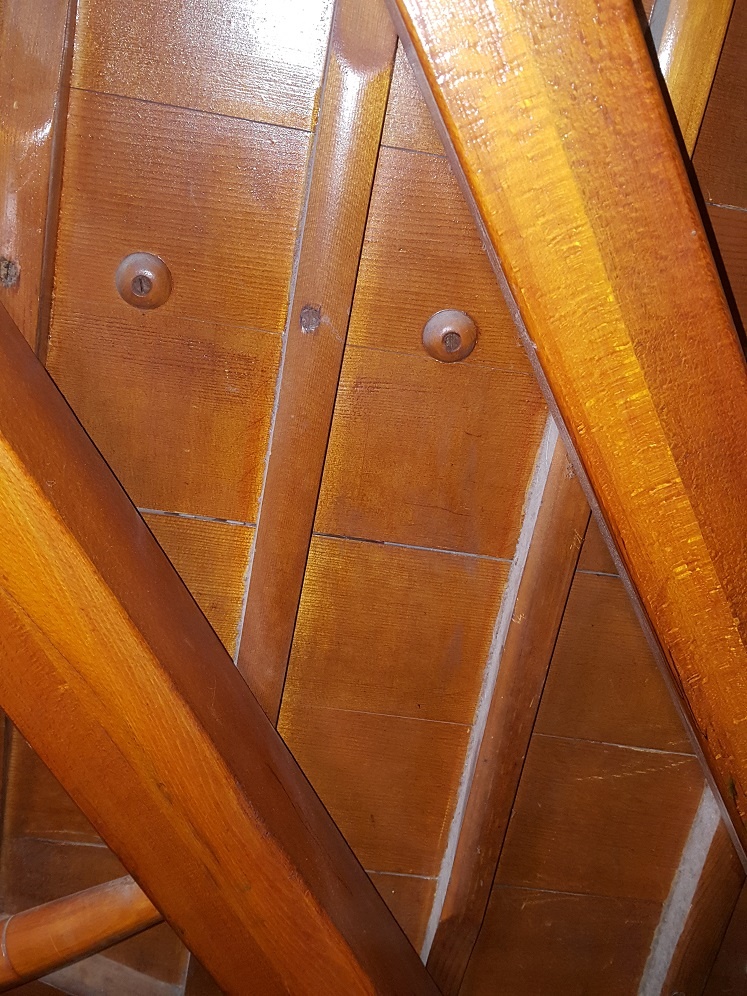
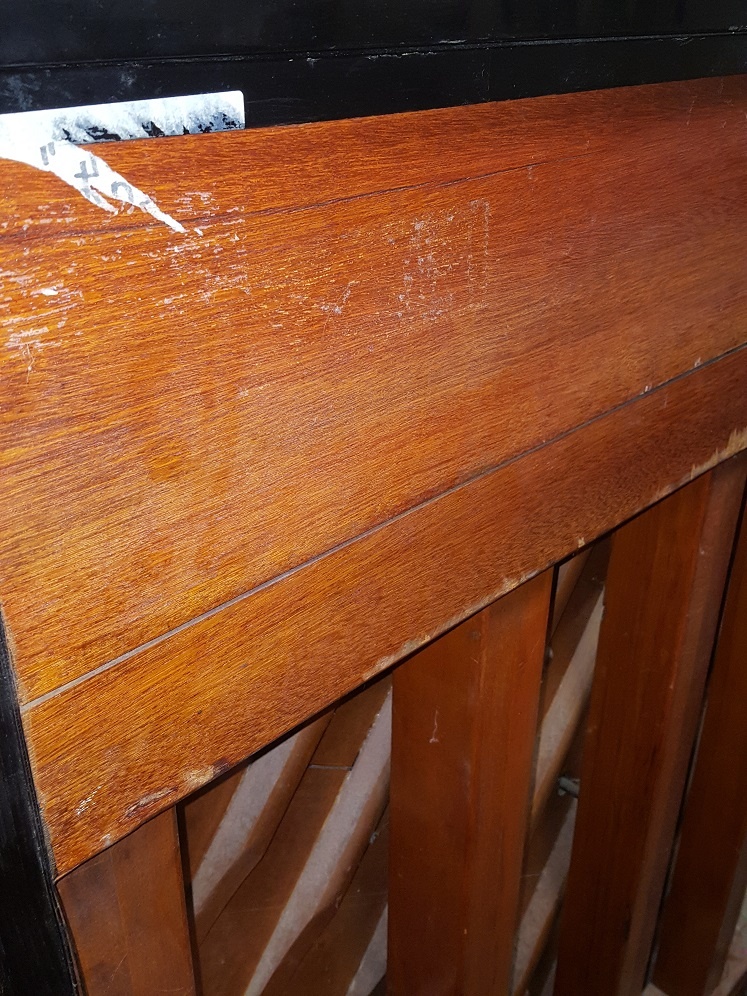
When taking a closer look at the soundboard and top panel at the back of the piano, you can see severe cracking and damage. This piano was unfit for sale. A deliberate attempt was made to disguise the structural problems it had. The pictures show the major structural fault in the form of a long crack, along with the splits in the soundboard. When a soundboard is this damaged, it should be replaced.
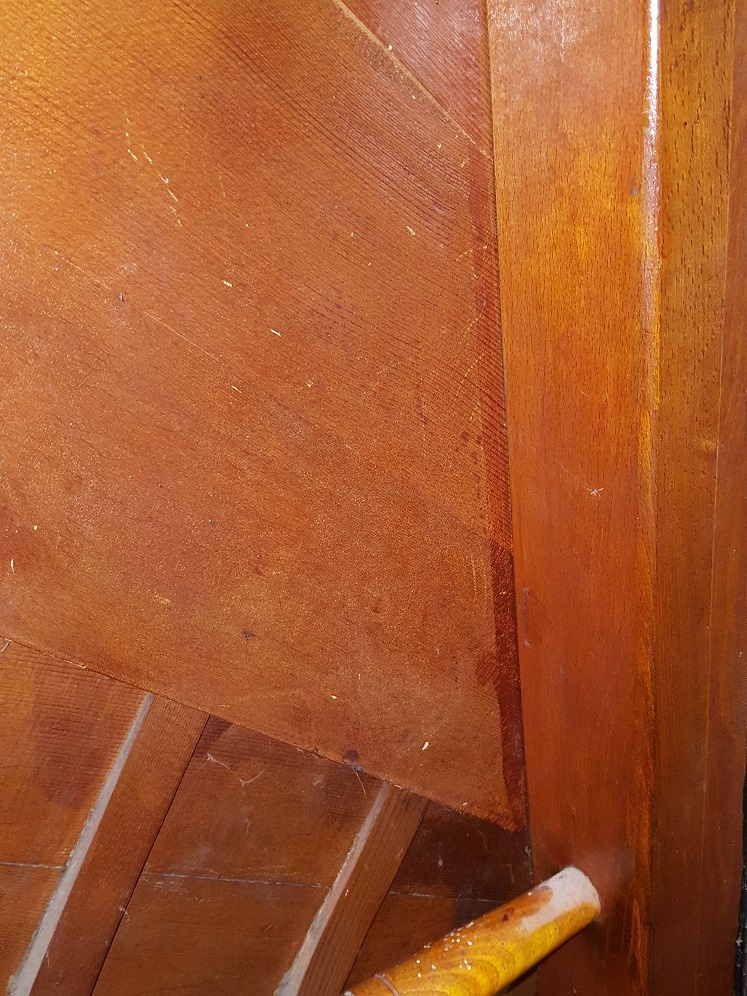
On the back right of the piano, above the handle for lifting, you can also see that the soundboard was beginning to separate from the cabinet. The dark line running up the join shows where someone has run their finger along it trying to fill the gap with glue unsuccessfully. Customers are being misled with the quality of their pianos and this type of work can be regularly found on “reconditioned” pianos where the seller does not have the expertise to attend to these issues correctly. We would also inform customers to be wary of guarantee periods offered on their products. The usual warranty from reputable retailers and manufacturers is 5 years country wide.
We are proud of our Heritage, Quality & Service. We will never allow a sub-standard product on our showroom floor and we are disappointed to see pianos being offloaded on unsuspecting consumers that are well below the standard. We believe that music is a gift for all to enjoy. You can see what our customers say by visiting our Facebook page or checking our Clients Say section on the website.
Click here for Part 2 or Click here for FAQs
